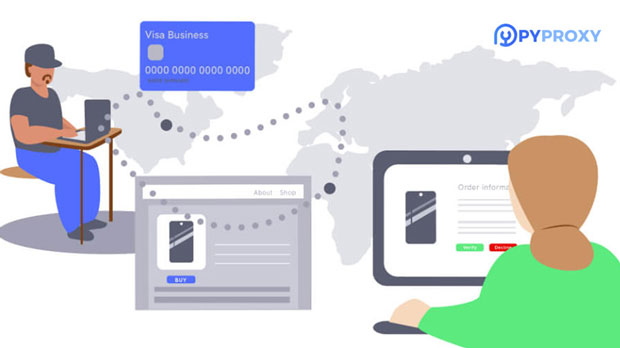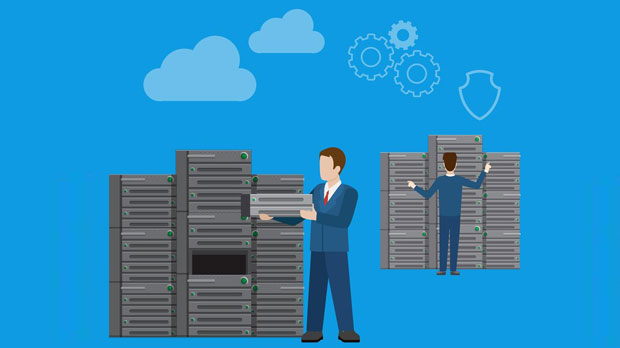Dynamic proxy pools have become an essential tool in various industries like web scraping, automated testing, and cybersecurity. They offer significant benefits such as anonymity, improved performance, and the ability to bypass geo-restrictions. The flexibility of proxy pool management is a key factor in determining which solution fits best for specific use cases. Among the popular options, PYPROXY and MiniProxy are two common tools used for managing proxy pools. The question arises: when it comes to dynamic proxy pool management, is PyProxy more flexible than MiniProxy? In this article, we will compare these two systems based on their features, ease of use, customization options, and scalability, to help you determine which solution is better suited for your needs.Understanding Proxy Pool ManagementBefore diving into the comparison, it’s important to understand what proxy pool management entails. Proxy pools refer to a collection of proxy servers that are used to route internet traffic in a way that hides the actual identity of the user. In dynamic proxy pools, the proxies are not fixed but are constantly rotated or replaced based on the system's requirements.The core functionalities of a proxy pool management system include:1. Rotation Mechanism: The ability to change the IP address frequently, ensuring anonymity and avoiding blocks.2. Health Monitoring: Monitoring the proxies to check if they are functional and replacing any faulty ones.3. Scalability: The capacity to handle a growing number of proxies as needed.4. Customizability: The ability to configure various settings such as the proxy rotation interval, the number of proxies in the pool, and the rules governing proxy selection.Overview of PyProxyPyProxy is a Python-based library designed for proxy management. It is commonly used in tasks like web scraping, where large numbers of proxies are needed to mask the real identity of users and avoid IP bans. The framework offers an easy-to-use API for adding proxies to the pool, rotating them dynamically, and monitoring their health.One of PyProxy’s most notable features is its dynamic rotation system. It offers automatic proxy switching after every request or at set intervals, ensuring that the proxies in use are not detected or blocked. Moreover, PyProxy has a built-in health-check mechanism that regularly verifies whether a proxy is still functional, reducing downtime and ensuring high success rates in tasks like web scraping.Another advantage of PyProxy is its extensibility. Developers can easily customize the proxy management system to suit their specific needs. Whether it's integrating with external databases for proxy storage or setting up advanced proxy rotation logic, PyProxy’s flexibility makes it a strong choice for developers looking for tailored solutions.Overview of MiniProxyMiniProxy is a simpler, more lightweight option for proxy pool management. It is designed to handle basic proxy rotation tasks and is often chosen for projects where the scale and complexity are lower than what PyProxy handles.Unlike PyProxy, MiniProxy does not provide the same level of dynamic rotation or health monitoring. Instead, it focuses on offering a straightforward proxy management system that can be set up and used quickly. While it can perform basic proxy switching, it lacks advanced customization features like the integration with external databases or advanced health checks for proxies. MiniProxy does have its advantages in simplicity, though. It is easy to deploy and configure, making it a good option for small-scale projects that do not require complex proxy management systems. However, it may not perform as well when handling large volumes of proxies or when intricate customization is necessary.Key Differences Between PyProxy and MiniProxyWhen comparing PyProxy and MiniProxy, several key differences emerge in terms of functionality, flexibility, and scalability.1. FlexibilityPyProxy excels in flexibility. Its ability to customize proxy rotation mechanisms and integrate with other systems makes it highly adaptable to a wide range of use cases. This level of flexibility is particularly beneficial for projects with complex requirements, such as rotating proxies at different intervals or integrating proxy management with a larger infrastructure.MiniProxy, on the other hand, is much more basic. It’s less customizable and doesn’t offer advanced configuration options like PyProxy. For smaller-scale projects that require simple proxy rotation without much complexity, MiniProxy might be sufficient. However, for more demanding projects that need scalability and customization, PyProxy is the better choice.2. Ease of UseMiniProxy shines when it comes to simplicity. Its setup and usage are straightforward, and it is well-suited for developers who don’t need advanced features. The basic proxy rotation it provides is sufficient for many use cases, particularly those that are not too resource-intensive.PyProxy, while offering more features, can be more complicated to set up and configure. However, its extensive documentation and large community support make it a manageable option for developers willing to invest the time into learning the framework. For users with more technical expertise or complex requirements, PyProxy’s steeper learning curve can be seen as an advantage, as it provides greater control.3. Performance and ScalabilityWhen it comes to scalability, PyProxy is clearly superior. It can handle large numbers of proxies without significant performance degradation. The system allows for the addition of thousands of proxies, and it efficiently manages their health and rotation, making it ideal for large-scale operations like web scraping or automated testing at scale.MiniProxy, while fast for small projects, may struggle when dealing with larger pools of proxies or more intensive tasks. It lacks the advanced management features that are needed to ensure high performance in large-scale applications. Therefore, it is better suited for smaller projects or those with limited proxy usage needs.4. Integration and ExtensibilityPyProxy’s extensibility is one of its strongest selling points. It is designed to integrate with other systems and can be customized to fit specific use cases. Whether it’s adding external proxy sources or customizing the health-checking logic, PyProxy’s flexibility in integration makes it a powerful tool for developers looking to create a highly tailored proxy pool system.MiniProxy, in contrast, is less extensible. It is designed as a simple, standalone solution that works well out of the box but lacks the customization options needed for more complex environments.Which One Is More Flexible?When comparing flexibility, PyProxy clearly outperforms MiniProxy in almost every category. Its ability to integrate with other systems, customize proxy rotation logic, and scale effectively makes it the more flexible option for developers who require a robust, customizable proxy pool management solution.MiniProxy, while offering simplicity and ease of use, is limited in its capabilities. It may be a good choice for small-scale projects or developers who need a quick, easy-to-deploy solution. However, when it comes to handling large-scale operations or projects with complex proxy management needs, PyProxy is the superior choice.In the context of dynamic proxy pool management, PyProxy is undoubtedly more flexible than MiniProxy. Its scalability, extensibility, and advanced customization options make it the ideal choice for larger, more complex projects. However, for those seeking simplicity and ease of use, MiniProxy remains a viable option. Understanding your project’s requirements and scale is crucial when choosing between these two tools. If flexibility and performance are critical to your project, PyProxy is the better option; if simplicity is key, MiniProxy may suffice.
Sep 08, 2025


































































